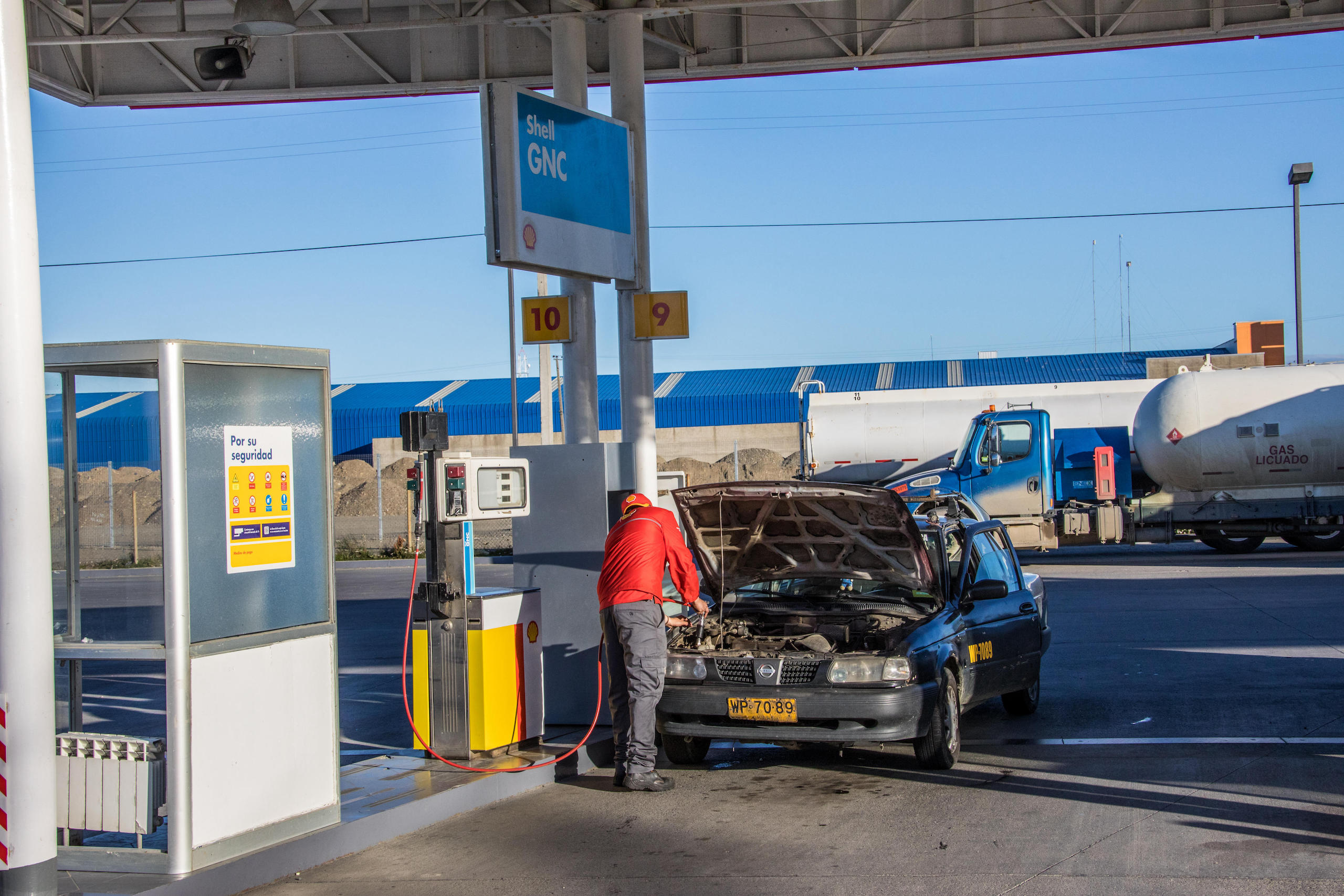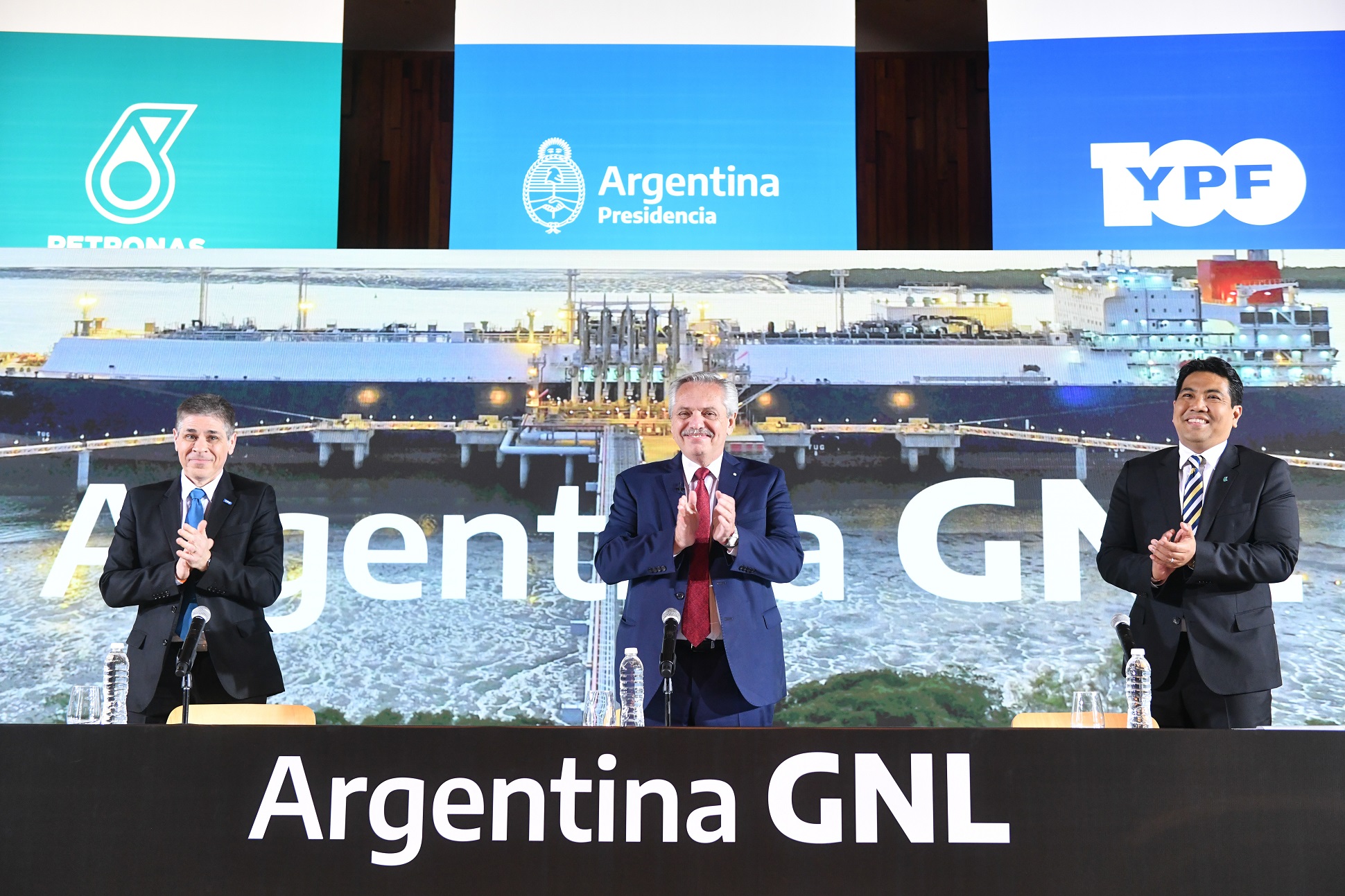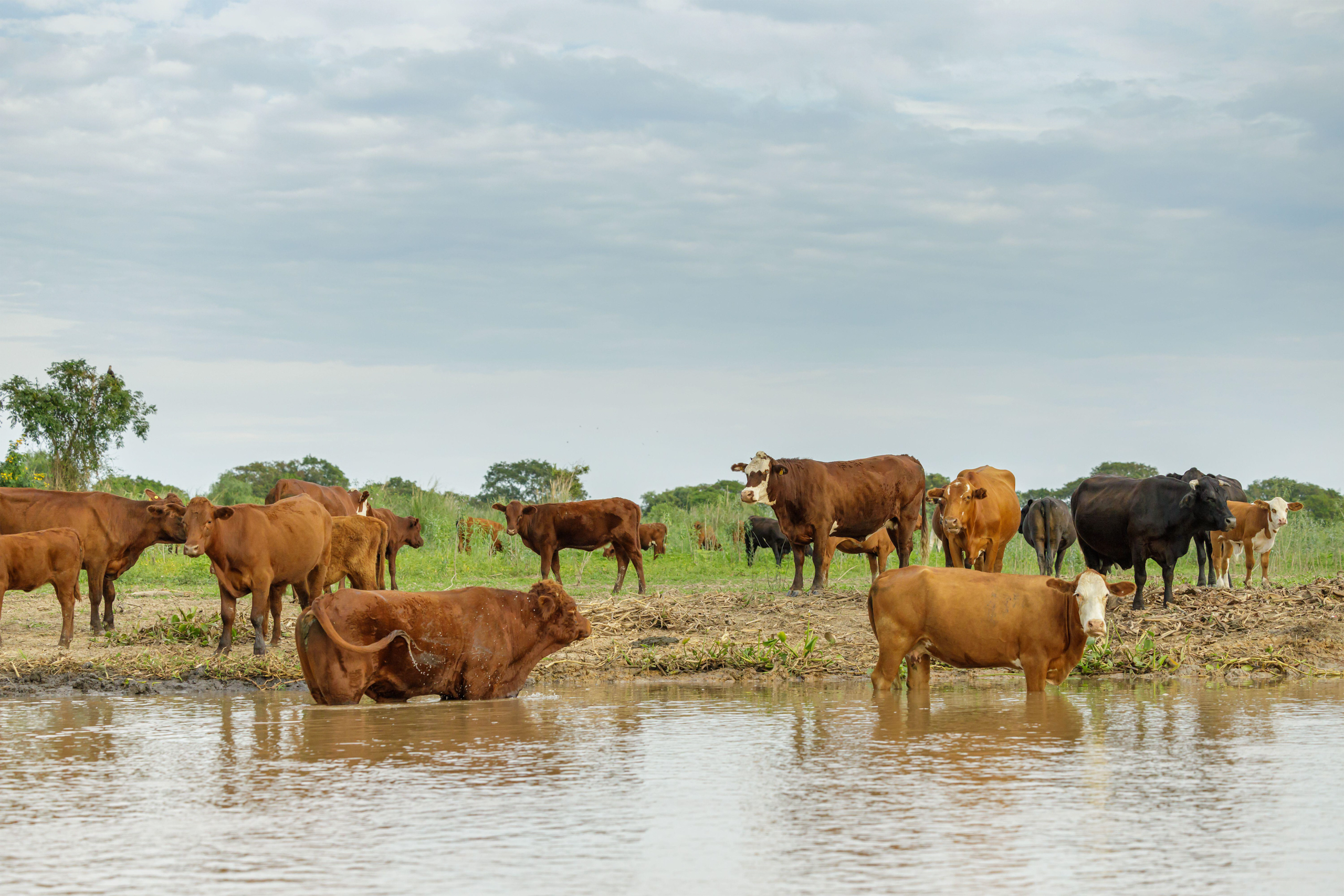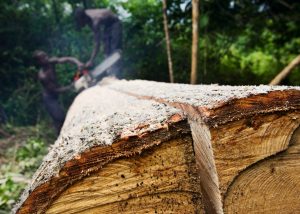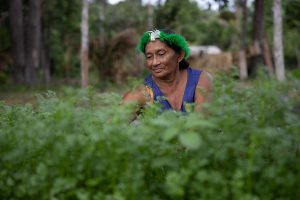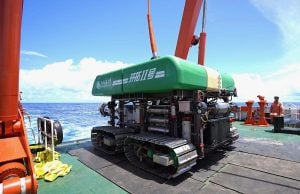The need to urgently drive down greenhouse gas emissions presents an existential challenge for the hydrocarbon industry, not least of all in Argentina.
The vast Vaca Muerta Basin, in the western province of Neuquén, is the world’s largest known unconventional oil and gas deposit outside of North America, seen by many as holding economic promise for the country, but raising climate concerns among others. Although some of the companies working to extract these deposits have produced their own decarbonisation plans, Argentina does not yet have the necessary legislation in place to regulate these efforts.
As such, each of these plans is different from the next. For example, some companies are incorporating renewable energy sources into their extraction operations, while others have settled on attempting to offset their greenhouse gas emissions by supporting reforestation and forest restoration in Argentina.
However, oil and gas companies’ efforts to confront their emissions remain contentious, and some observers question their ability to genuinely decarbonise while continuing to produce fuels that generate yet more emissions. Doubts have also been raised over the lack of government guidance that could regulate and direct their actions.
Gaps in emissions regulation
In 2023, Argentina’s National Energy Secretariat issued a resolution creating the National Program for the Measurement and Reduction of Fugitive Emissions Derived from Hydrocarbon Exploration and Production Activities. Its objectives include measuring greenhouse gas emissions and requiring operators in the country to draw up five-year emissions-reduction plans.
Similar developments have come at the local level. In 2022, Neuquén initiated a plan that would compel hydrocarbon companies operating in its jurisdiction to share emissions data, thus creating a provincial registry. However, it has not yet been implemented.
A source at the Neuquén sub-secretariat of hydrocarbons, who asked not to be named, told Dialogue Earth that “nothing is systematised … operators were asked to report their emissions, which they did so through their sustainability reports. But we received very heterogeneous information, because each one measures in different ways.”
Meanwhile, changes in provincial government leadership have reportedly paralysed this project: “We don’t know if the sub-secretariat of the environment or the sub-secretariat of hydrocarbons is going to work on it,” says the source.
They also claim that while the larger oil companies are working to reduce their emissions in Vaca Muerta, smaller operators “do not have plans, nor do they intend to”.
The source added there are two administrative developments in the pipeline that should progress this issue: a decree on fugitive emissions and a provincial climate change law, which will reportedly cover all economic activities.
Global commitments
During 2023’s COP28 climate summit, more than 50 oil companies signed the Oil & Gas Decarbonization Charter (OGDC), pledging to achieve “high-scale impact” and to speed up climate action within the industry. At the time, the charter’s signatories produced over 40% of the world’s oil, and among them were a number of companies reported to be involved at Vaca Muerta: multinationals TotalEnergies, Shell, BP ExxonMobil and Equinor, Brazil’s state-owned Petrobras and Argentina’s YPF.
The charter’s goals include: ending the routine “flaring” of fossil fuels by 2030; “near-zero upstream methane emissions”; establishing industry best practices for emissions reduction; investing in energies of the future, including renewables; increasing transparency regarding greenhouse gas emissions reporting and the efforts being made to mitigate them; and accelerating decarbonisation in operations.
In December 2023, an International Energy Agency (IEA) report on the role of oil and gas industry in the energy transition recommended that hydrocarbon producers dedicate half of their investments to clean energy by 2030 to achieve the aims of the OGDC, and to align with the Paris Agreement on climate change. But the report also points out how significant a shift this would require: in 2022, the oil and gas industry reportedly allocated just 2.5% (USD 20 billion) of its total capital spending for clean energy.
Shell’s strategy in focus
The British-Dutch oil and gas company Shell, which has interests at Vaca Muerta, has ratified its commitment to “become a net-zero emissions energy business by 2050”, in accordance with the Paris Agreement.
According to company documents shared with Dialogue Earth, Shell has prioritised the “accurate and reliable measurement” of its methane emissions, the greenhouse gas released during fossil fuel extraction and use that has a short-term planet-heating potential more than 80 times higher than carbon dioxide. Shell says it complies with the standards set by The Oil & Gas Methane Partnership 2.0, which is the industry’s only existing global benchmark.
Sources at Shell told Dialogue Earth that Argentine operations achieved a 60% reduction in carbon intensity – the amount of CO2 required per unit of energy produced – in 2023, compared to 2019. A company spokesperson last year claimed that methane intensity had also reduced by 72% in that time – though such reporting is plagued by inadequate data and measurement, and independent verification of figures is usually lacking.
Globally, Shell committed to reducing its greenhouse gas emissions by 20% by 2030. But in 2021, a court in the Netherlands ruled that Shell must reduce its global carbon emissions by 45% by the end of 2030 – a decision that the company is still appealing. Earlier this year, it reportedly weakened its own reduction goals to between 15% and 20%, citing strong gas demand and uncertainty around the energy transition amid cost and supply concerns.
In relation to its local operations, the president of Shell Argentina, Ricardo Rodriguez, has claimed the company has “ensured that we measure and certify our carbon footprint. It is a process that takes time and is done in levels, but we are doing it.”
Shell Argentina says it is electrifying its operations using renewable energies. For example, it signed an agreement with the energy company Genneia in March, which will reportedly supply its Vaca Muerta operations with energy from wind and solar sources for seven years.
At Vaca Muerta, the company reports that it has replaced gas power with renewable energy at its Sierras Blancas, Cruz de Lorena and Coiron Amargo Sur Oeste well blocks. This is said to have entailed upgrading existing power grids, building an electricity substation and laying 60 kilometres of high-voltage lines. It estimates this will reduce emissions from operations by an average of 20,000 tonnes of carbon dioxide equivalent per year across the entire life cycle of these blocks.
In its communication with Dialogue Earth, Shell also said it is investigating how to electrify drilling in its Bajo de Añelo bloc to replace polluting diesel power.
Mixed results for YPF
Argentina’s state-controlled energy company has identified venting, methane leakage, and the use of fossil fuels as its main sources of emissions at Vaca Muerta. Its proposed solutions to these issues include a cut in flaring, a plan to repair and renew its equipment, and a transition to renewable energy sources for its operations.
Gas flaring is the routine burning of natural gas that escapes during oil extraction. This gas could be repurposed, but due to financial, political, regulatory and safety issues it is burned off instead, creating pollution.
Similarly, gas venting is the deliberate leaking of natural gas, which may happen if flaring is not possible, or if a flare is malfunctioning.
YPF’s sustainability and energy transitions manager, Silvina Oberti, spoke of this work at the Argentina Energy Summit event in May. “We have managed to exceed the target of reducing carbon emissions by more than 12% in Vaca Muerta and in unconventional production in general,” she claimed. Oberti added that this will be important, as a reportedly lower carbon footprint could make its products more competitive “to reach external markets”.
According to its latest sustainability report, 2022 was the fifth consecutive year during which YPF reduced its “direct emissions intensity” – the pollution required to complete an activity. By 2027, the report reads, YPF expects to have reduced its direct emissions intensity by at least 30%, halved flaring, and reduced its methane emissions by 10%. YPF’s 2030 methane target is a 30% reduction in emissions, by which time it also expects to have eliminated flaring from its operations.
The company believes current progress will enable it to exceed its 2030 targets. It also says it hopes to reduce its overall carbon footprint via carbon capture and by participating in hydrogen projects.
The La Amarga Chica oil and gas field, operated in conjunction with Malaysia’s Petronas, is YPF’s primary source of greenhouse gas emissions among its interests at Vaca Muerta. YPF says it has reduced flaring at the block, which it claims will save 260,000 tonnes of carbon dioxide equivalent emissions annually.
“Since 2020, the oil company has been managing the assessment, detection and measurement of methane emissions and venting with different types of technologies, such as satellite and aerial images, to strengthen the activities carried out in the field with portable detection cameras,” its sustainability report reads.
While the company said it is working with its various subsidiaries – YTec, YPF Lithium and YPF Luz – to reduce emissions in the upstream (exploration, discovery and production of oil and gas), in the refining sector it detected a 5% increase in direct emissions in 2022. If crude oil processing is revealed to have been higher in 2023, this figure may also have increased. This data is not yet available.
Vista pursues offsets
Vista, an oil and gas company active in Argentina and Mexico, is focusing on carbon-offsetting projects and renewable energy deployment to reduce its greenhouse gas emissions at Vaca Muerta.
“We are going to decarbonisation as a concept of evolution: the world demands accessible and reliable energy and Vaca Muerta has an opportunity there,” Vista’s operations manager, Matías Weissel, told an event earlier this year. He claims it is “completely achievable” for operations at Vaca Muerta to be net-zero by 2026, while simultaneously tripling production – something that would require a 75% reduction in its emissions intensity, compared to 2020 level, according to a company sustainability report.
“Our strategy is based on comprehensive steam-recovery projects [referring to steam injection, a method of enhancing output from wells], electrification of our facilities, the use of renewables and offsetting,” Weissel said.
To this end, Vista has created a subsidiary, Aike, to carry out its nature-based solutions portfolio, which, they claim in their sustainability report, “is a significant milestone towards achieving our ambition to be carbon neutral by 2026”.
Under this scheme, Vista has initiated several offset actions: mixed afforestation, forest conservation, and support for regenerative cattle ranching and agriculture. Its first project included the afforestation of 2,200 hectares in Argentina’s north-eastern province of Corrientes, and the purchase of 4,900 hectares in the north-western province of Salta for a conservation project, aiming to avoid emissions from deforestation and forest degradation in a province that had some of the country’s highest rates of deforestation in 2023.
Vista also reports it has also signed agreements to support sustainable livestock farming practices on 4,000 hectares in Santa Fe province and on nearly 1,500 hectares in Salta.
Elsewhere, Vista has signed an agreement with Neuquén’s provincial government earlier this year to study whether it can capture carbon emissions through pine plantations in Huinganco, in the north of the province.
Such offsetting schemes, particularly those involving forestry, are however the subject of ongoing debate and controversy, with several scandals throwing into doubt the veracity and durability of their emissions reductions, which companies are increasingly relying upon for their carbon reporting.
Camila Mercure, climate policy head at Fundación Ambiente y Recursos Naturales (FARN), an NGO from Argentina, told Dialogue Earth of concerns over the effectiveness of offsets. “Priority should be given to measures that tend to prevent or reduce emissions, but not to offsetting measures, as the problem is not being tackled at the source,” she said.
Pluspetrol and cryptocurrency
Unlike Shell and Vista, Pluspetrol, active across Latin America, has not set emissions-reduction targets in its sustainability planning. On the contrary, its 2022 sustainability report indicated that the company’s emissions have increased in recent years.
Pluspetrol’s general manager, Adrián Vila, told an event earlier this year that “the energy transition is an opportunity, but in the liquids part [oil] we have to hurry”, suggesting companies should rush to produce more – something which studies have warned against, if Paris Agreement targets are to be met. “The agenda has been changing and I think the objectives have to be realistic. Argentina has many resources and we have to define the window in which [the transition] will take place in relation to other countries,” Vila added.
Pluspetrol is leading a project that repurposes vented gas for cryptocurrency mining. Launched in 2023 by the Argentine firm Unblock and replicated in Vaca Muerta by Tecpetrol and Pampa Energía, the project emulates efforts first seen in the United States.
Taking place in Pluspetrol’s Loma Jarillosa Este oil production concession, gas that would otherwise be vented is repurposed to generate electricity for cryptocurrency mining – a notoriously energy-hungry process. The impact of this venting mitigation on the company’s greenhouse gas emissions is yet to be published.
In 2021, Pluspetrol’s total recorded emissions in Argentina were 25.01 kg of CO2 equivalent per million barrels of oil, according to its sustainability reports. In 2022, this figure was 25.22 kg; in 2021, methane releases accounted for 13.65% of its overall greenhouse gas emissions, staying relatively consistent at 13.97% in the following year.
The World Bank’s 2022 Global Flaring and Venting Regulations report states that between 2012 and 2022, flaring intensity – the volume of gas flared per barrel of oil produced – increased in Argentina by 124%.
There is a logic in the industry to compete to sell the last barrel, so everyone is trying to lower their carbon footprint, to be the last one sellingEnrique Maurtua Konstantinidis, climate change consultant
During that period, according to government data, YPF’s Loma La Campana accounted for the highest share of flaring events (12%), followed by Pluspetrol’s La Calera, YPF’s El Portón and Loma La Lata and San Roque from Total Austral – each recording over 5% of flaring events.
Argentina does not have a national register of greenhouse gas emissions from the hydrocarbon sector. Such records fall to the operators themselves, some of which take annual measurements.
That oversight of this monitoring and efforts to address emissions reduction lies with the companies is a source of frustration for some observers, with some feeling such actions still fail to address the bigger issues. “The ways in which oil companies address their own operational footprint are interesting, but this does not solve the problem, because it does not change the fact that you are going to burn those fuels that do generate emissions,” Enrique Maurtua Konstantinidis, a climate change consultant, told Dialogue Earth.
Maurtua Konstantinidis also questions the motives of the industry, as they look to the future: “There is a logic in the industry to compete and see who sells the last barrel, so everyone is trying to lower their carbon footprint, to be the last one to sell it.”
This article was produced as part of the Pathways to Net Zero Project in Argentina, a joint initiative of the Earth Journalism Network, Banco de Bosques, Claves21 and Periodistas por el Planeta.


